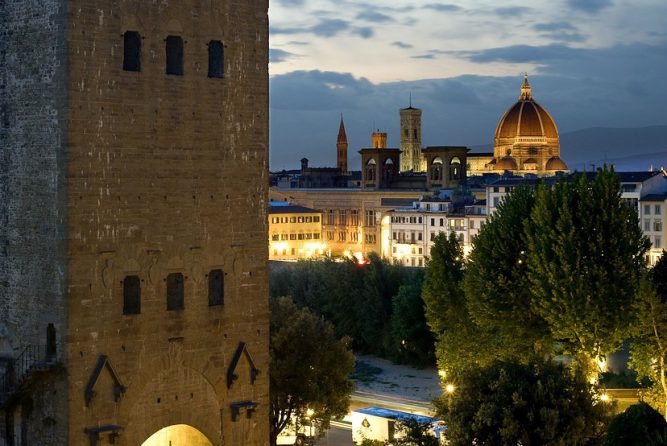COVID-19: Gov’t Decree March 6 – April 6, 2021

Italian Prime Minister Mario Draghi has signed the first official decree of the newly-formed government, which will go into effect on March 6 and will last until April 6, two days after Easter, implementing restrictions designed to lower the number of infections and deaths from the virus.
GENERAL RULES
Italy will continue to be divided in “red,” “orange”, and “yellow” zones, which reflect the severity of Coronavirus contagions in addition to the newly instituted “white zone.” Florence and Tuscany are presently categorized “orange” (arancione). People cannot leave the region where they are living except for necessity, work or health reasons, with self-certification.
Ski resorts, discos, gyms and swimming pools will remain closed. Ditto for shopping centers on the weekend (except for drug stores, bookshops, newsstands, plant and flower vendors) as well as fairs and festivals. Contact sport activity remains suspended.
It is prohibited to leave one’s town of residence at any time except for work and health reasons or necessity; the same applies for going out where one lives.
The national curfew from 10 pm to 5 am will remain in place except for the “white” zone. Outdoor exercise is permitted given that two-meter social distancing (6.5 ft.) is respected.
NEWS
All schools will close immediately in a region when it is classified a “red zone,” and remote learning mandated although the disabled and students with special needs can still attend on-site special ed classes. Hairdressers, nail salons and beauticians will close.
Theaters and cinemas can reopen in “yellow zones,” starting on March 27, which cannot contain an audience than 25% of total capacity (with a maximum of 400 spectators outdoors and 200 indoors); seating must be reserved.
RED ZONE RULES
Retail shops will close along with hairdressers and nail salons. It is prohibited to leave one’s town of residence at any time except for work and health reasons or necessity; the same applies for going out where one lives.
Visits to relatives and friends once a day, as allowed during Christmas holidays, can no longer take place.
Restaurants and bars will remain closed except for take out (up to 10 pm) or delivery, which can take place 24/7. Grocery stores, supermarkets, pet food shops, hardware stores, newsstands, hairdressers, dry cleaners and pharmacies can stay open.
Besides Italian professional team events, all sports competitions are cancelled or postponed. Residents run, jog or bike within town limits but exercise or take a walk near their home.
Museums, exhibitions, cinemas and theaters will remain closed; buses, trains and trams will accept only 50% of passenger capacity.
ORANGE ZONE RULES
Restaurants and bars will open to allow take out from the premises and delivery orders. Retail shops, supermarkets, grocery stores, newsstands and pharmacies may remain open in addition to hairdressers and nail salons. Depending on the severity of COVID infections, governors of each region can decided to keep schools partially open, especially in middle and elementary schools, or opt for complete closure. People cannot travel outside their town or city of residence except for necessity, work or health reasons. Hairdressers and nail salons are open.
YELLOW ZONE RULES
Dining indoors resumes with a limit of four people per table. Take-away and delivery services are allowed to continue past 6 pm for restaurants and other facilities with kitchens only. Retail stores, hairdressers and nail salons may maintain their regular hours. Schools can offer classes in person. Museums, exhibitions and gardens can be visited on weekdays, and beginning on March 27, also on weekends.
WHITE ZONE RULES
At the moment, only the region of Sardinia is a “white” zone, having a low number of COVID cases. Bars and cafés can offer table service until 9 pm, restaurants until 11 pm. Curfew is shorter, from 11:30 pm – 5 am. Gyms, swimming pools, cinemas, theaters and exhibitions become once again accessible to the public.
On March 2, Tuscany had 1,058 new Coronavirus cases and 13 deaths; 30% of hospital beds in intensive care are occupied by COVID patients. (rosanna cirigliano)
